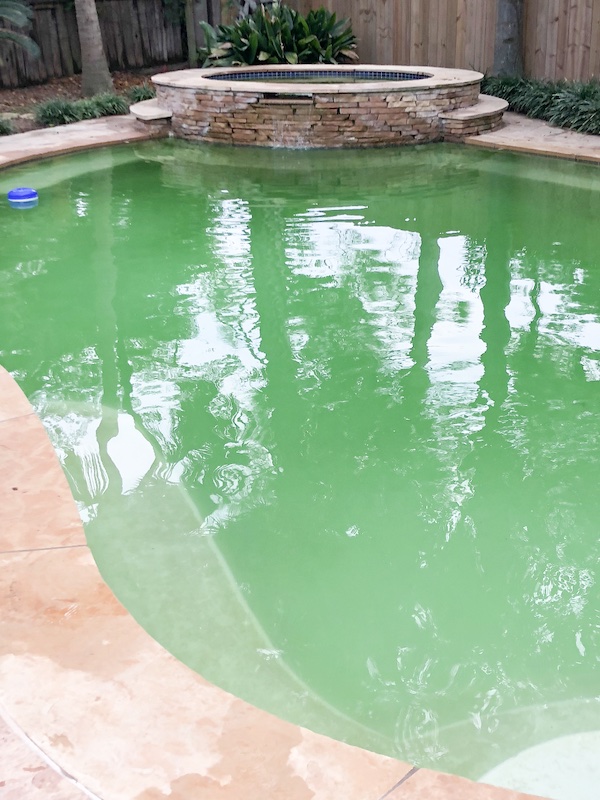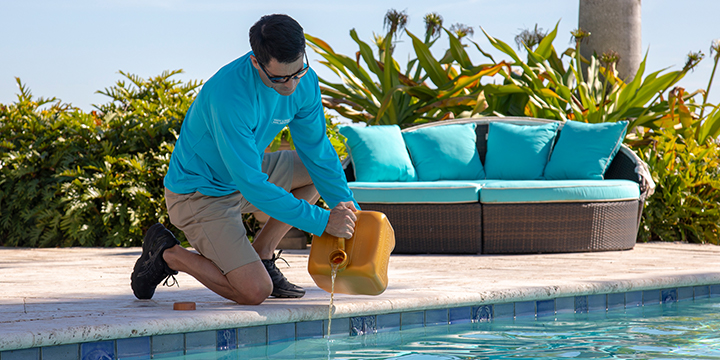
Liquid chlorine and granular shock have the same active chemical that sanitizes your pool, what changes is the strength and the way you use it. Liquid chlorine is less costly, unstabilized and comes in liquid form. Granular shock is stabilized and comes in a solid form that dissolves in your pool.
Chlorine is the most cost-effective way to sanitize your pool. It has been the product of choice for almost 100 years. It is safe enough to sanitize drinking water and powerful enough, in the right concentrations, to kill bacteria, germs and viruses. It also oxidizes as it sanitizes, helping to keep your pool clear.
A quick disclaimer: The word “chlorine” is often used inappropriately, but has become the generic term for the world’s most common sanitizer. Real chlorine is only available in gaseous form. The kind used in your pool (hypochlorous acid) is derived from this form and mixed with various chemicals to make it a solid or liquid. With that in mind, let’s dive into more detail.
What is the Difference Between Stabilized and Unstabilized Chlorine
Stabilized chlorine, such as Suncoast Complete Tablets, is used as a disinfectant in automatic chlorinators. It is best for daily sanitizing because it lasts longer. This type comes in tabs (or pucks) or in granular form and can be distributed in a variety of ways, just don't put them in the skimmer! Floating chlorinators use tabs and distribute chemicals over time. Most floating chlorinators can hold anywhere from two to eight weeks' worth of chlorine, depending on conditions such as the season and your pool's size. An automatic feeder works in a similar way, allowing it to mix with the pool water slowly and deliberately. This type generally comes in a large bucket.
Unstabilized chlorine is used for weekly shocking and to give your pool a large dose of chlorine to sanitize the water quickly after heavy use. Unstabilized chlorine provides a quick, high concentration, killing bacteria and other nasty things in the water. It is also helpful in controlling algae, destroying organic contaminants and restoring clarity. It is best to wait before entering the pool because liquid chlorine levels will be high after shocking, but it will be safe to swim after only 24 hours.
Each chlorine compound is designed for a specific purpose. Using these two types in conjunction with one another will keep your pool clean, clear, and sparkling!
Liquid Chlorine vs. Granular Shock
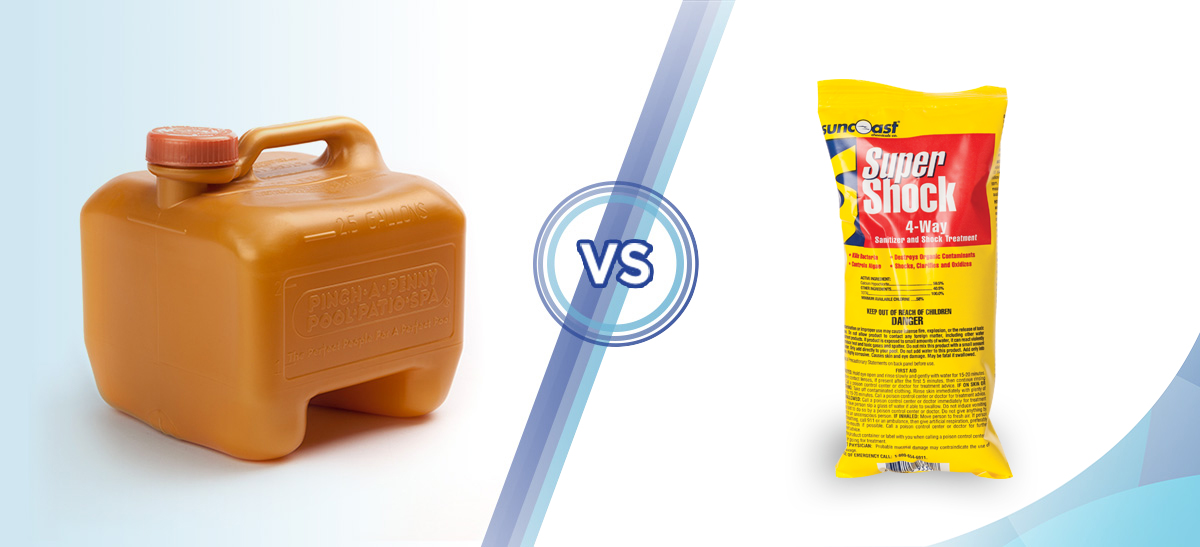
Now that we know the difference between stabilized and unstabilized chlorine, let’s look at the differences between liquid and powdered (or granular) shock. Both of these types of chlorine are considered unstabilized. However, there are some major similarities and differences. Liquid chlorine and granular shock have a higher concentration of available chlorine than those used in daily chlorination, which is needed to kill all living microorganisms, bacteria and contaminants. Both products also are effective for clearing couldy pool water fast and controlling alage.
Liquid Chlorine
- Does not need to dissolve in water
- Comes in refillable containers
- Jugs can be heavy to lift
- Non-scaling and leaves no residue
- Generally 60-80% less costly than the granular version
- Most popular option
Granular Shock
- Dissolves fast
- One-time use container
- Easier to carry
- Can increase the TDS of your pool
- More expensive than liquid chlorine
- Can be stored for long periods of time
Shock for Traditionally Chlorinated Pools
Suncoast Gold Liquid Chlorinating Shock
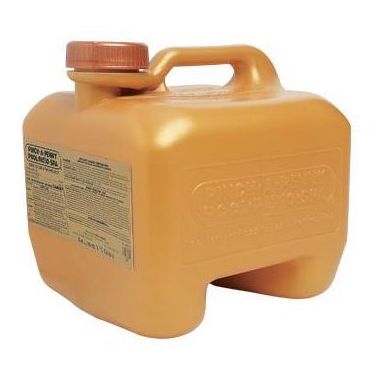
Suncoast Super Shock 4-Way
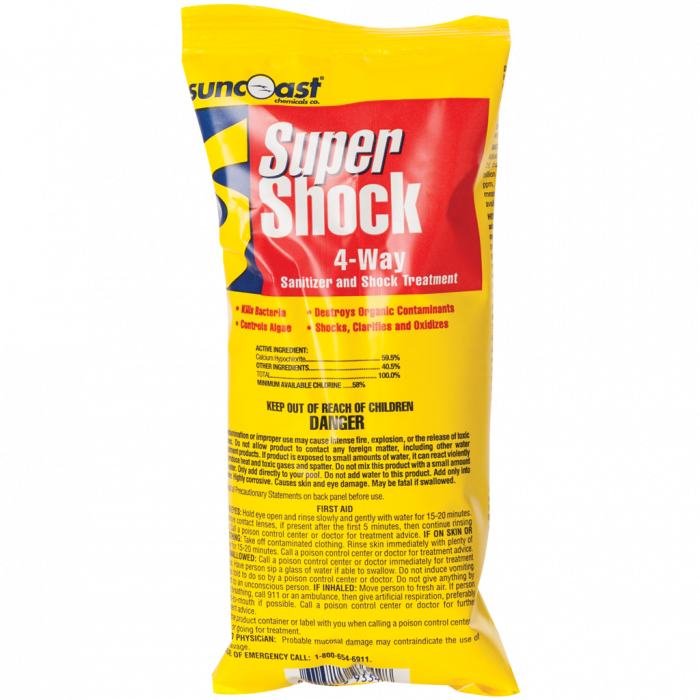
Shock for Salt Chlorinated Pools
Salinity Surge Shock
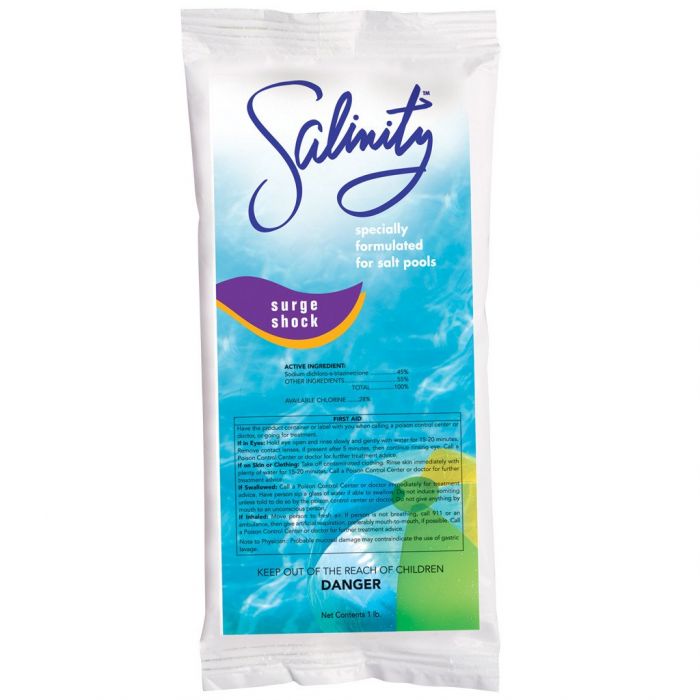
Suncoast Oxidizing Shock & Swim
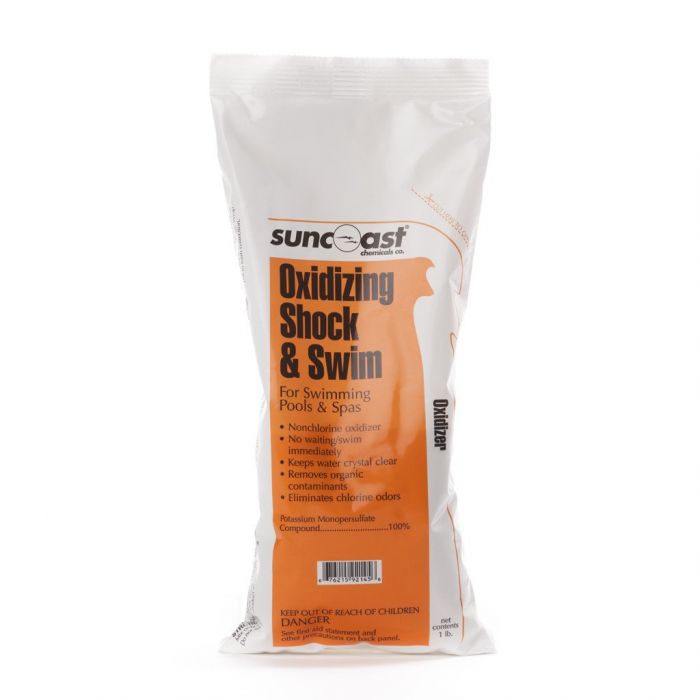
Tips for Proper Chlorine Use
Some powdered shock can be poured directly into the pool, but most must be mixed in water to prevent staining. Make sure to read the instructions carefully and quickly sweep away any grains left at the bottom of the pool. Some pool owners prefer granular shock because it's available in smaller packages and transports easily, but most customers prefer liquid chlorine for its refillable qualities. Your local Pinch A Penny store associates will refill your liquid chlorine jugs and can provide spill trays so you don’t have to worry about a mess!
In the end, all types of chlorine will disinfect your pool. The type that you use for weekly shocking is largely up to you. Suncoast Gold Liquid Chlorinating Shock is the freshest and strongest available today, and has been since 1975! Many factors can affect your decision, such as budget, pool size, and climate. It is best to talk to the experts at your local Pinch A Penny store for expert advice and friendly service! Also, check your levels weekly, as some shock products may affect pH. For your convenience, your neighborhood Pinch A Penny offers FREE water testing.

POOL CHEMICAL SAFETY WARNING:
No matter which product you choose, do not mix chemicals together. Chlorine is a hazardous material. Always handle with care and take proper safety precautions, such as wearing gloves and goggles, before handling and when using. If you have questions about handling chemicals, please contact your local Pinch A Penny pool care expert.
Share This Post
Related Tags
